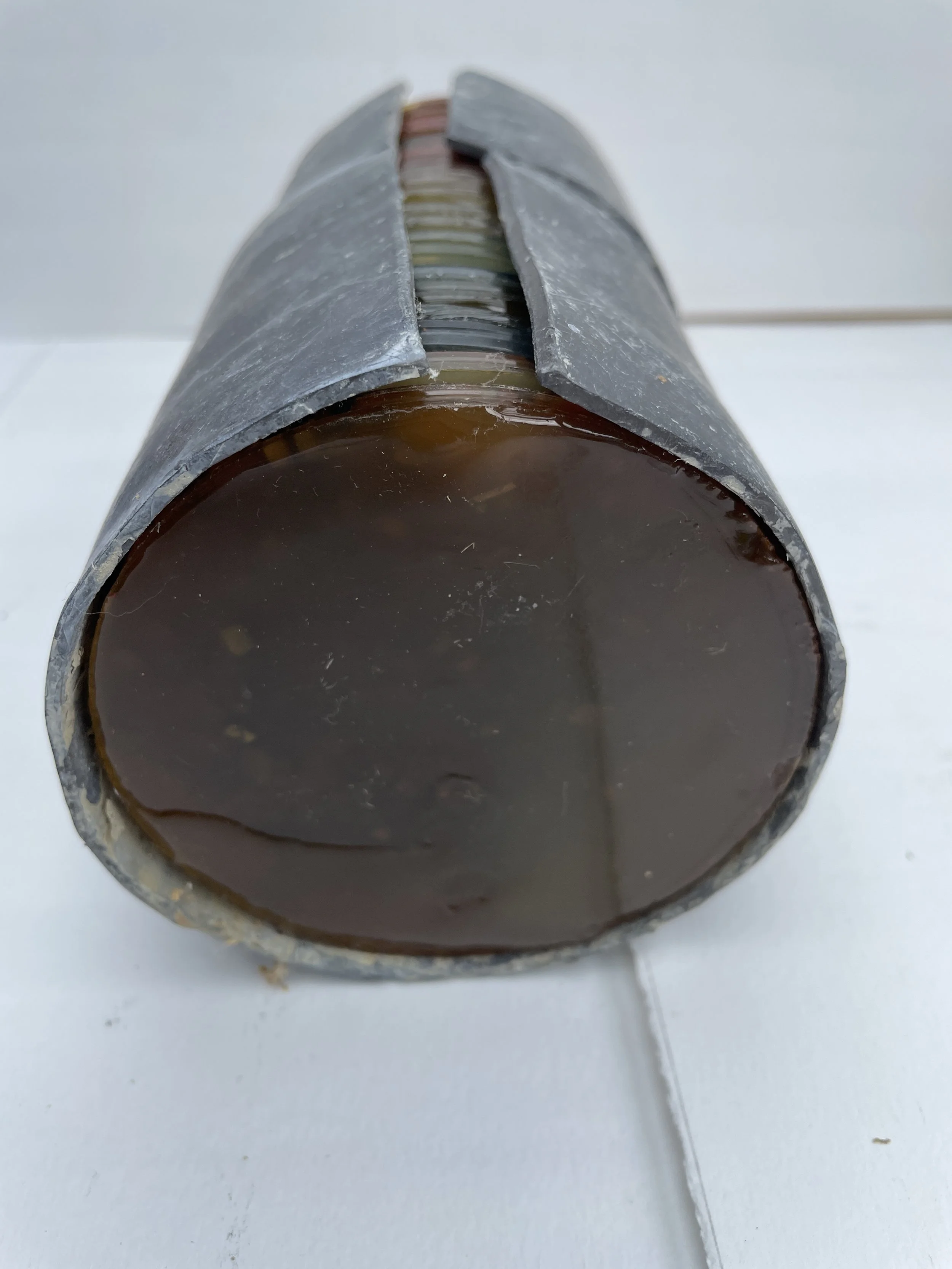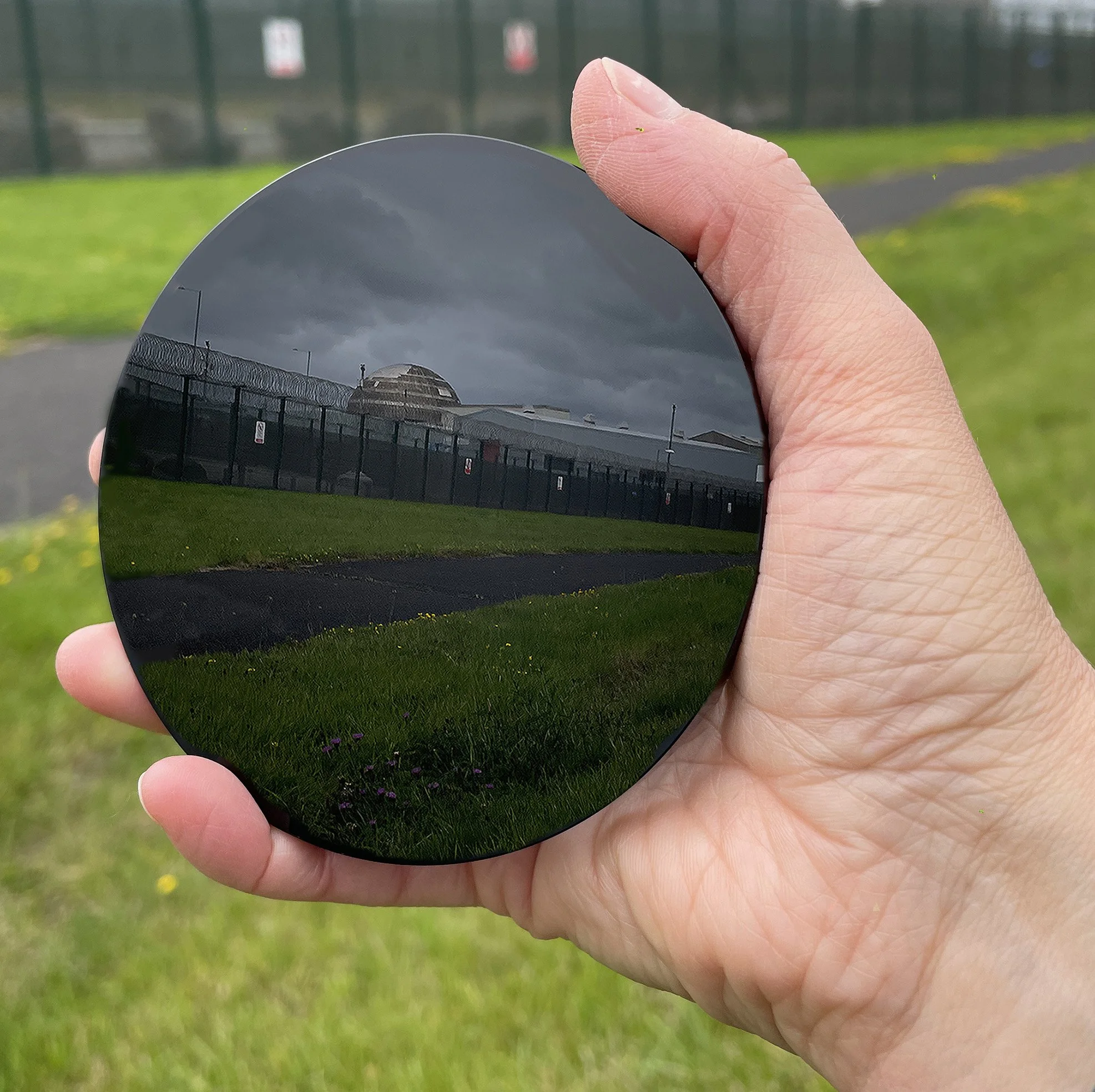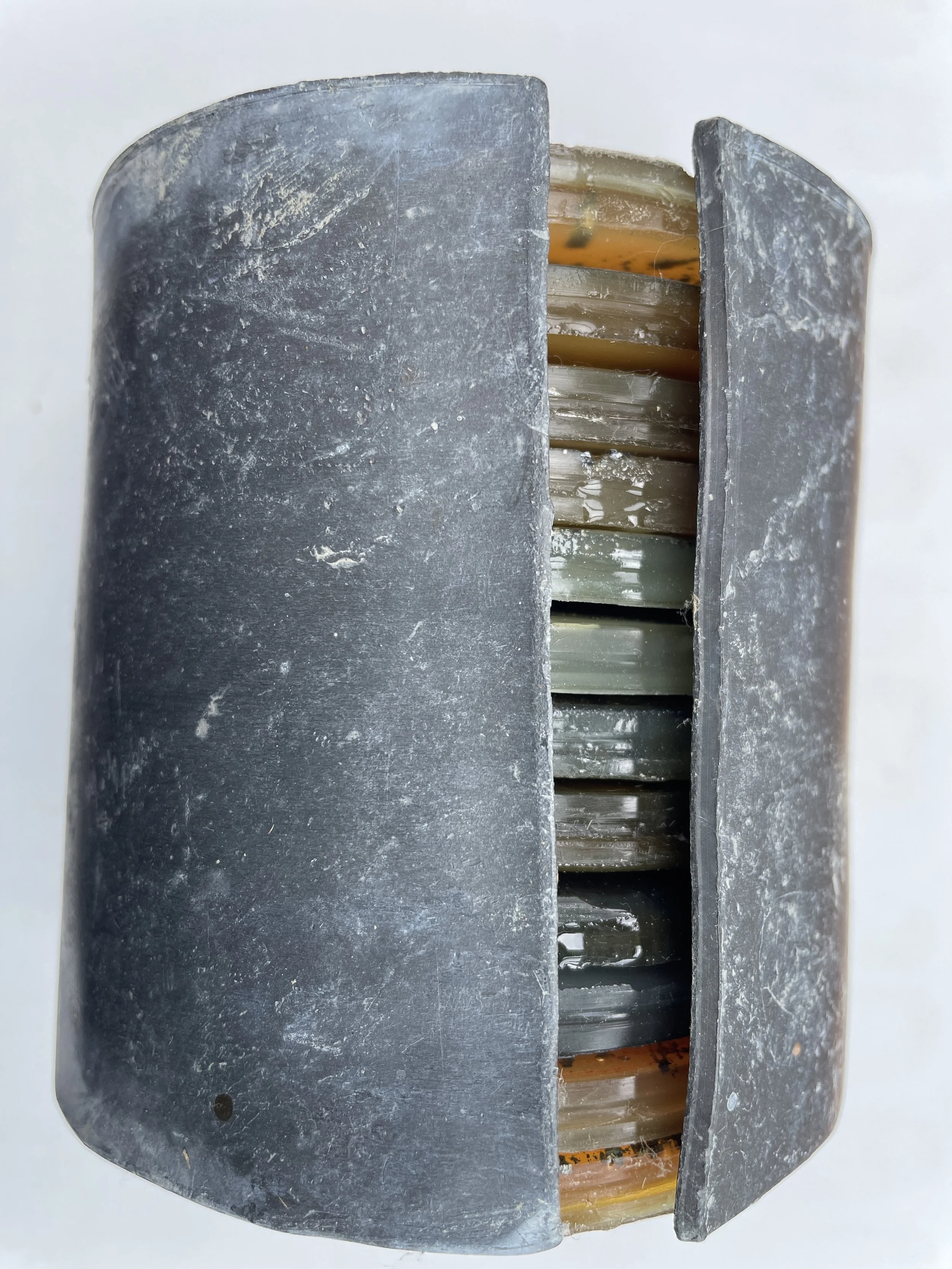Bridget Kennedy
Bridget Kennedy works with installation, sculpture, photography and video in order to investigate the impact and evidence of societal change on the landscapes she encounters. She lives in the midst of a post-industrial landscape on the outskirts of a remote North Pennine village in the UK.
Bridget is a part time lecturer in the Fine Art department at Newcastle University and an underground tour guide at Killhope Lead Mining Museum. She is currently engaged in research for a part time practice-based PhD in the Fine Art department of Goldsmiths University.
—
Bridget Kennedy is currently embroiled in a relationship with an area of land to the South of the Sellafield Nuclear Licenced Site in West Cumbria. Through field trips, archive research and sculptural explorations with materials related to the generation of nuclear energy and the containment of the resulting radioactive waste Bridget aims to engage with some of the more-than-human and energetic presences of this extraordinary place. Seeking to bridge a gap between conventional forms of knowledge and sensory, material intelligence she is curious to see how her experiments might contribute to a shift in thinking about human / nature dynamics.
In a small sculptural piece called Mineralogical Restraint Bridget Kennedy usesmaterials, pertaining both to the industrial legacy of extraction and the current business of nuclear waste storage in West Cumbria. Encapsulated in a resin made from linseed oil, small amounts of iron ore, graphite powder, copper foil and lead ore have been formed into discs. These individual portions of mineralogical material mimic the shape and form of a promotional item produced by British Nuclear Fuels Limited in the 1980’s.
This item, a disc of borosilicate glass, was presented to the public as a simulation of the amount of high level vitrified radioactive waste one person would produce in a life time’s use of nuclear energy. The discs in Mineralogical Restraint widen the environmental scope of this energy footprint, pointing to some of the key earth resources that are required for the production of electricity. Configured in such a way as to resemble layers or strata in a core sample the discs sit alongside each other in a lead sleeve, a barrier which raises questions about what or who requires protection.



